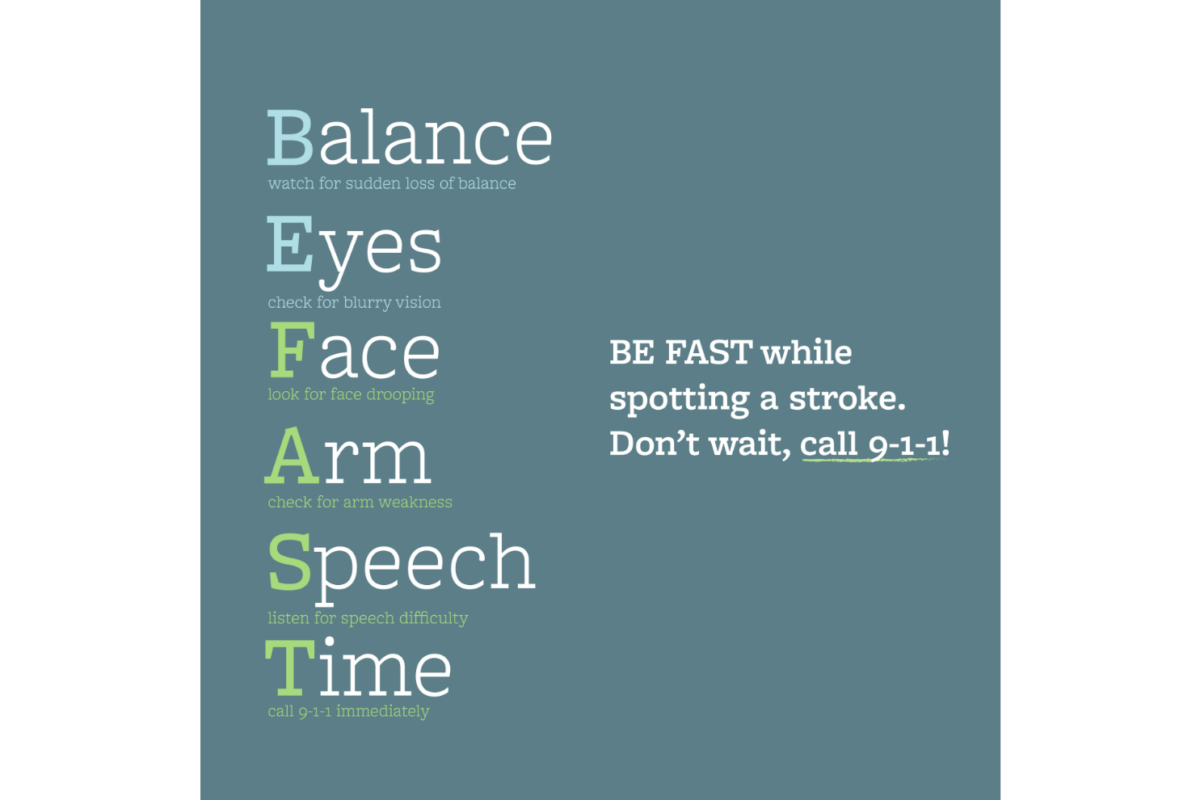Working Out the Risk

Date: May 4, 2022
Categories: Health Focused
Working out of the Risk
Kathryn S. Ventura, PT, DPT, CSRS
Augusta Health Stroke Team
May is Stroke Awareness Month. Augusta Health is a DNV certified Primary Stroke Center. Its interdisciplinary Stroke Team works throughout the hospital to provide specialized, quality care for all stroke patients. More information is available at www.augustahealth.com/service/stroke-center
Every 40 seconds in the United States someone has a stroke. One of four of these takes place in individuals who have had a previous stroke. Per the Centers for Disease Control (CDC), this totals 795,000 strokes a year that can occur in individuals at any age—although risk increases as age increases. With statistics such as these, it’s important to know how you can decrease your risk of being one of them.
When it comes to risk factors for strokes, The American Stroke Association has identified both uncontrollable and controllable factors that place one at higher odds of having a stroke. Uncontrollable risk factors, the ones you cannot change, include age, family history, race, gender, personal prior history of having a stroke, transient ischemic attach (TIA) and previous Heart Attacks. Risk factors you can control and change for the better include high blood pressure, smoking, Diabetes, diet, obesity, high cholesterol, Carotid and Peripheral Artery Disease, Atrial Fibrillation, Heart Disease and possibly most easily, physical inactivity.
That may seem like a lot of risk factors to try to control and a daunting task. However, improvements in physical activity levels and increasing compliance to an exercise program can lead to improvements with numerous risk factors. Increased activity has long been shown to assist with decreasing high blood pressure, improving cholesterol levels, decreasing obesity, and lowering the overall risk of heart related disease. Recommending an increase and change in one’s physical activity levels is great, but what does this mean and what should you be doing to start lowering your risk?
Per the American Heart Association, adults should aim to get at least 150 minute a week of moderate-intensity aerobic activity or 75 minutes a week of vigorous-intensity aerobic activity spread throughout the week. While this may seem like a lot, when you break it down it could be as simple as a 22-minute brisk walk daily, which is much more attainable for most individuals. Other examples of moderate intensity exercises include leisurely biking, water aerobics, dancing, doubles tennis and even gardening or yard work. With moderate level activity you should feel your heart beating harder than at rest, but still be able to carry out a conversation, which will also make your time exercising more enjoyable and social. Examples of more vigorous aerobic exercise include running, hiking in the beautiful mountains, swimming laps, singles tennis, cycling (10 mph or faster) or heavier yard work. The idea here is that you will feel your heartbeat even faster, start sweating and have more difficulty talking without getting out of breath but will still be able to converse.
For those individuals who are stroke survivors, the importance of maintaining a physically active lifestyle remains crucial to decreasing the risk of future strokes. The American Heart Association continues to recommend weekly exercise at rate of at least 10 minutes a day four days a week. However, this will be highly variable depending on an individual’s abilities and level of residual deficits. Many survivors will actually be able to tolerate more physical activity which will only further decrease risk factors. Other’s may be more limited in their abilities and require more adaptation and creativity to get recommended physical activity levels. If you are a stroke survivor, your physical activity may look different. A brisk walk may turn into a slower walk with a cane or assistive device but will still elevate your heart rate and increase your work of breathing, which is the overall goal. Other survivors may benefit more from a home exercise program of strengthening activities or even a chair exercise program if they have more limited mobility or balance concerns. The bottom line is that any activity is good activity and will be beneficial to health and risk factor reduction even if it does not look like what physical activity may have looked like prior to a stroke.
Do what you can. Go for a walk, do some gardening, find a chair exercise program video to watch. Every little bit helps. For more personalized guidance, don’t hesitate to consult with your doctor, rehabilitation specialist or exercise specialist as they will be able to provide more individualized recommendations, guidelines, and ideas for how you can increase your physical activity level to decrease your risk factors for stroke or repeat stroke.
